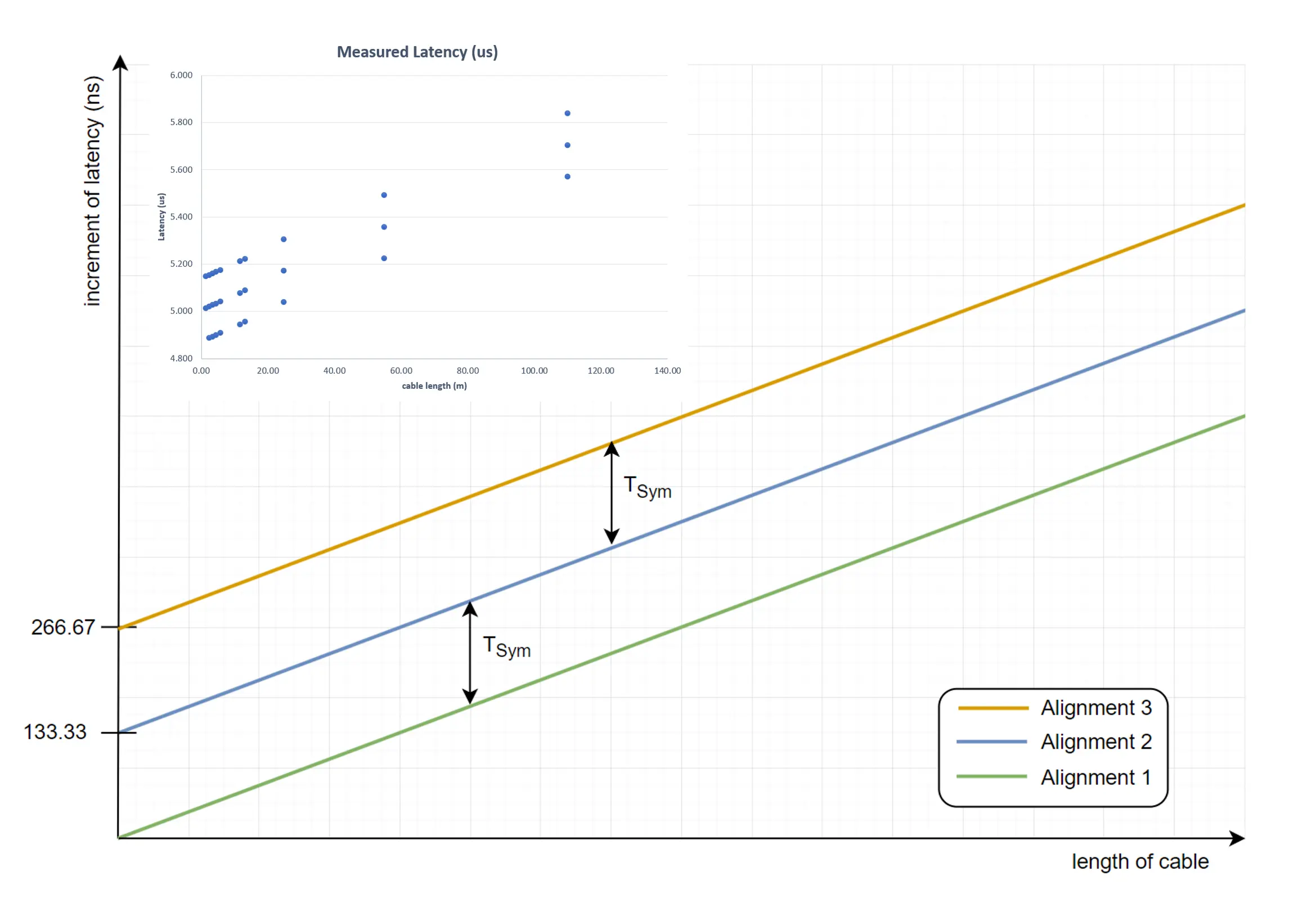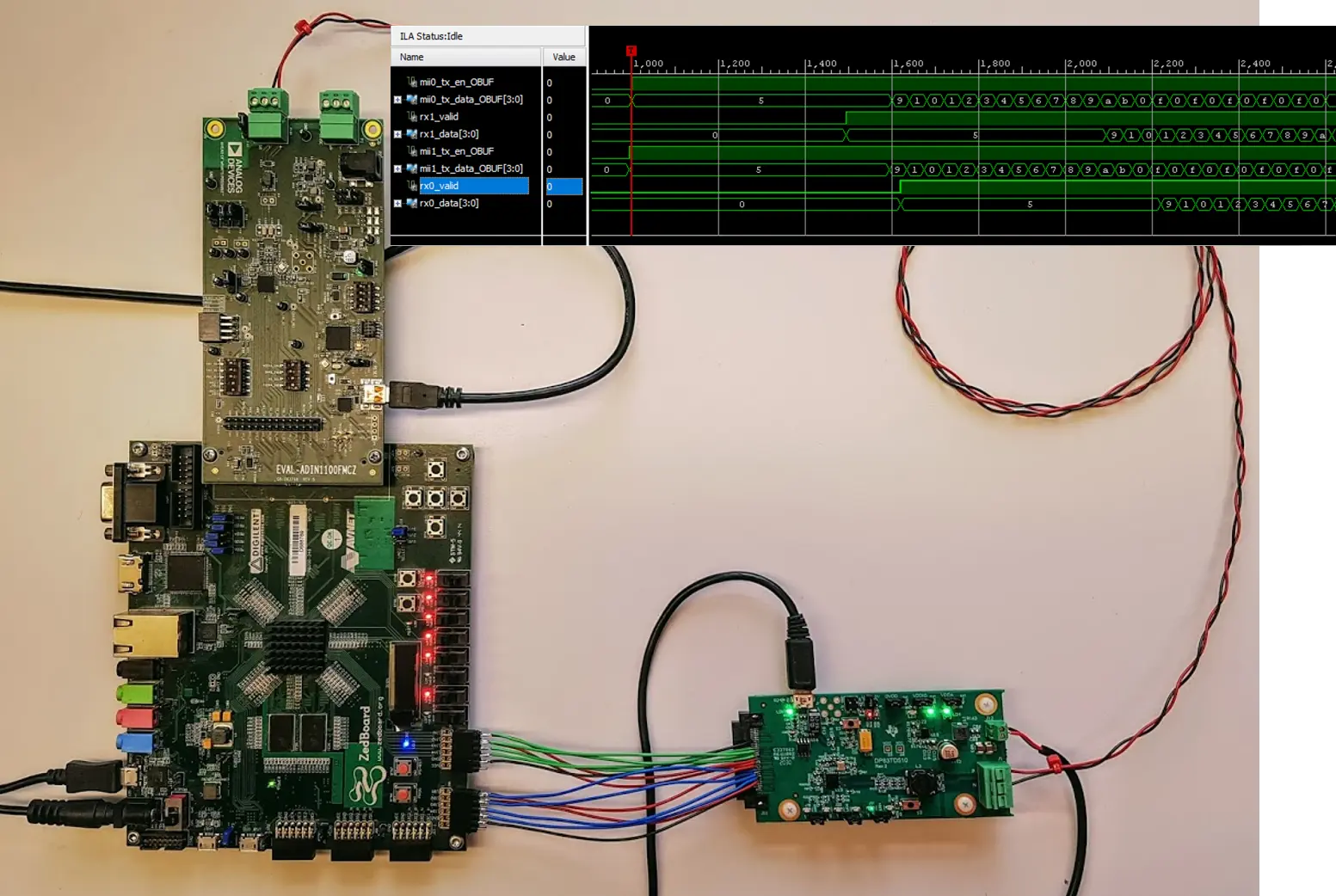Single Pair Ethernet (SPE)
The new single-pair Ethernet technologies open up promising possibilities and are aimed at very different areas of application. Very high data rates of 5 Gbit/s and more over relatively short distances are of particular interest in the automotive and aerospace sectors. On the other hand, 10BASE-T1L is a technology that can electrically bridge distances up to 1.5 km and more.
10BASE-T1L and Time Stamp Precision
In a project with an industrial partner, a network was to be designed for a large-scale distributed measurement system. 10BASE-T1L is a suitable communication technology for sensor networking due to the supported possible link distance of more than 1.5 km and a data rate of 10 Mbit/s, which is sufficient for sensor applications. To achieve the time synchronization requirements of one microsecond for the synchronous acquisition of measured values, the propagation time of the signals between two nodes must be determined precisely. It turns out that the range of uncertainty can be up to several hundred nanoseconds, depending on the components and the chosen interface between the medium access (MAC) and physical layer (PHY) components. In addition, the latency in both directions is subject to a systematic, unknown asymmetry. For demanding applications, it is therefore highly important that suitable components and interfaces are selected, and that the important parameters are set correctly. The following figure shows measured and modeled values for the one-way latency at the interface to the 10BASE-T1L physical layer component.

Frame Preemption with 10BASE-T1L
On behalf of the APL (Advanced Physical Layer) project, InES investigated how latencies in 10 Mbit/s Ethernet can be reduced with frame preemption (IEEE Std. 802.3br). The results were presented in a joint presentation with a component manufacturer at the TSN/A Conference 2021 and contributed to IEEE developing the 802.3de amendment to the Ethernet standard and adopting it in 2022.
